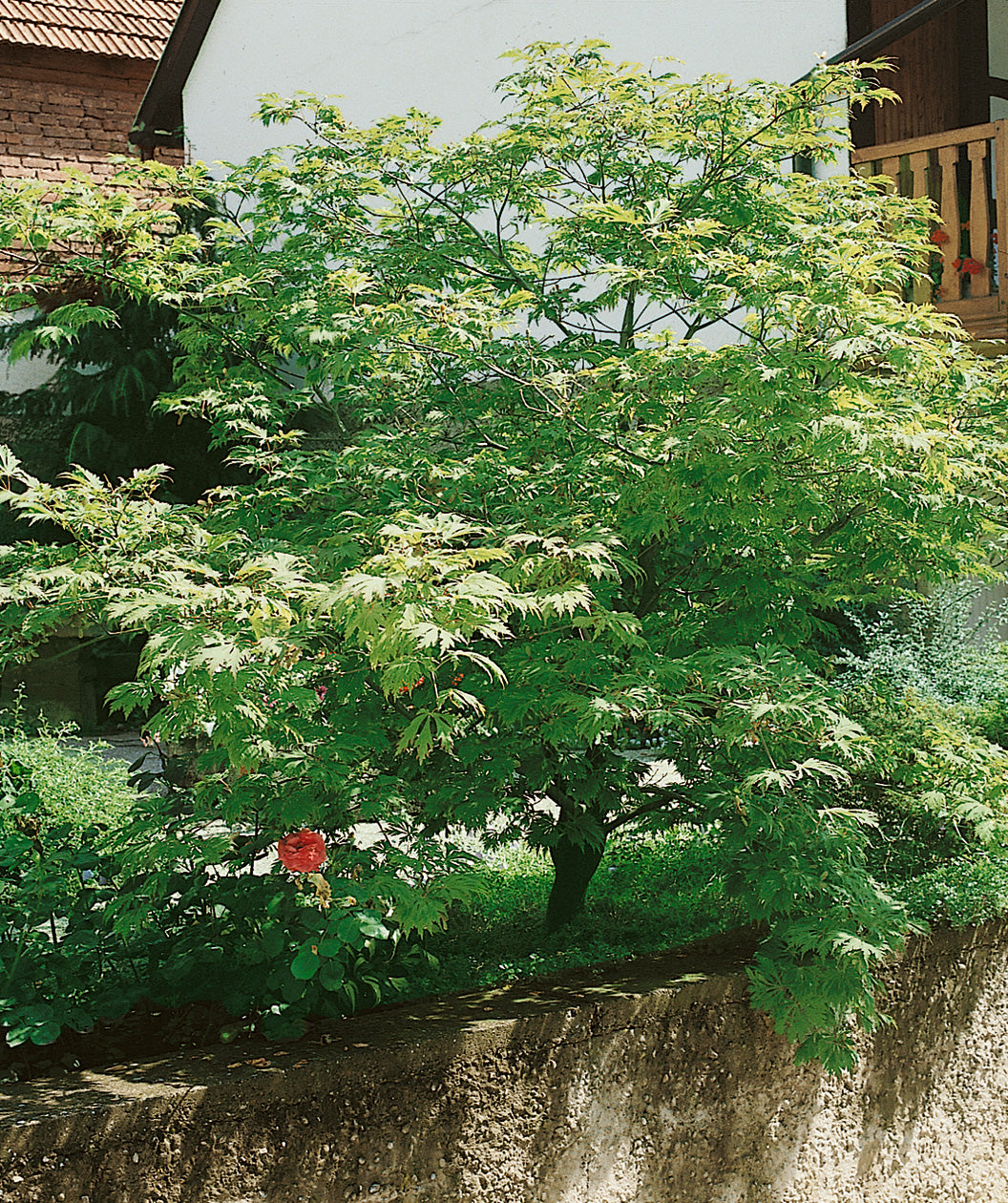


Growth Facts
- Hardiness Zone: 4-7
- Mature Height: 8-12' tall
- Mature Width: 15' wide
- Exposure: Full Sun/Part Shade
- Spacing: 12-15' apart
Growth Facts
- Hardiness Zone: 4-7
- Mature Height: 8-12' tall
- Mature Width: 15' wide
- Exposure: Full Sun/Part Shade
- Spacing: 12-15' apart
Why plant Fernleaf Full Moon Maple?
If autumn color is your passion, then this is the tree for you! Fernleaf Full Moon Maple will give you fall fireworks each year. During spring and summer, its soft green leaves are beautiful, too—deeply cut and heavily lobed, like feathery fingers. But fall is when it takes your breath away. Plants in sunnier sites will turn a blazing scarlet color, while in a bit more shade, you’ll get a mix of red, orange, purple, and gold. Site Fernleaf Full Moon Maple where the morning sun can shine through the foliage, and it will glow like stained glass! Magical.
Full Moon Maple, native to Japan, Manchuria, and Korea, is similar to the species known as Japanese Maple, but there are some differences. Full Moon Maple is less tolerant of hot weather than Japanese Maple, and its branches are stiffer and coarser. It gets its name from its rounded leaves. This cut-leaved variety was introduced to the public in 1888 by Parsons Nursery of Flushing, New York. It may have already existed in Japan before then, however, because it also has a Japanese name, Maiku Jaku, which means “Dancing Peacock.”
How to use Fernleaf Full Moon Maple in the landscape?
Fernleaf Full Moon Maple flowers are underrated! They dangle below the downy-soft, newly emerging leaves like tiny red bells, the bright yellow stamens poking out from the bottom. You won’t notice them from a distance, but up close, they’re precious! Put a bench under your tree so you can sit down and appreciate them at close range.
Planting Zones
Hardiness Zone: 4-7
How To Plant Fernleaf Full Moon Maple
Fernleaf Full Moon Maple is happiest in moderate climates where winters are neither too frigid, nor summers too hot and steamy. It appreciates some shade from the afternoon sun. Wind protection is advisable in sites exposed to freezing winter winds. Fernleaf Full Moon Maple isn’t fussy about soil, as long as it isn’t wet. Like most Maple Trees, it does occasionally fall prey to verticillium wilt, a fungal disease present in some soils. The disease is more likely to attack stressed trees, and proper cultural care is the best means of defense against it.
How To Water
Once you have found the perfect location to plant your Japanese Maple, it will appreciate regular water during the first few years in the ground. Be sure to keep it watered throughout dry spells until it has become established in your garden.
How To Fertilize
Incorporate Elements Starter Plant food granular form into the soil when planting. If planting in spring or summer, start fertilizing late fall using Elements Starter Plant food granular form on an annual basis each late fall. Continue this for the first three years to get your plant well established.
How To Prune
Pruning is rarely needed on the Fernleaf Full Moon Maple but in the case that it is, it is best to do so when full dormant.




